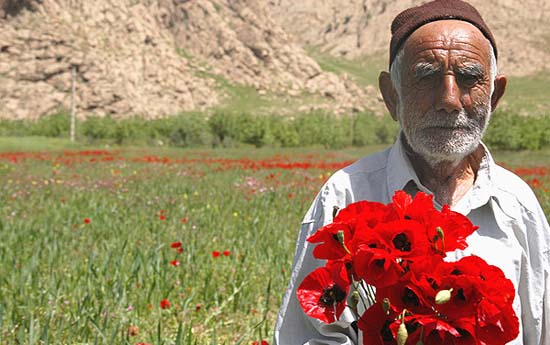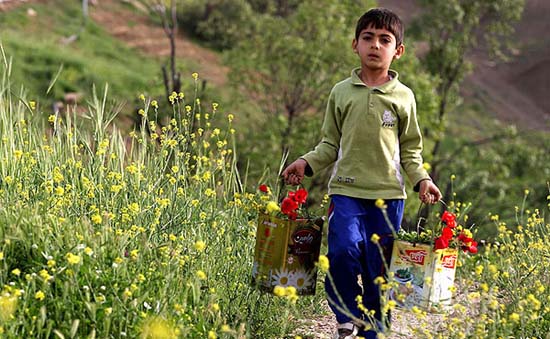Nariman Fazeli
Chovil
The Folk Music of Bakhtiari
Tracks:
01 - Gol Shirin
02 - Balal Gol Va Ahay Gol
03 - Cheshmeh Kohrang
04 - Tiyam
05 - Bi Kalam
06 - Gol Be Khare
07 - Lalaei Khaf
08 - Chovil
Tracks:
01 - Gol Shirin
02 - Balal Gol Va Ahay Gol
03 - Cheshmeh Kohrang
04 - Tiyam
05 - Bi Kalam
06 - Gol Be Khare
07 - Lalaei Khaf
08 - Chovil
♫☆`*♥¸¸.•*¨*•♫☆`*♥¸¸.•*¨*•☆♫
.ღ•:*´♥`*:•ღ.
♫☆`*♥¸¸.•*¨*•☆♫`*♥¸¸.•*¨*•☆♫
.ღ•:*´♥`*:•ღ.
♫☆`*♥¸¸.•*¨*•☆♫`*♥¸¸.•*¨*•☆♫
The Bakhtiari tribe, which numbers more than 800,000, inhabits an area of approximately 67,000 sq. km (25,000 sq. mi) that straddles the central Zagros Mountains in Iran. Although only about a third of the tribe is nomadic (the rest are settled agriculturists), the nomads embody the Bakhtiari cultural ideals. They specialize in producing meat and dairy products and migrate seasonally with their sheep, cattle, or goat herds from high plateau pastures, where they spend the summer, west of the city of Esfahan, to lowland plains in the province of Khuzistan for winter herd grazing. Their migration is among the most spectacular known among nomadic paternalists anywhere. They are obliged to cross mountain passes at about 3,050 m (10,000 ft) and therefore have to time their movement with extreme care in order to minimize the danger of early snowfall, flooding mountain rivers, and lack of grazing. Traditionally these dangers took a heavy toll, but in recent years the government has helped the migration by building bridges, improving the route, and setting up fodder supplies en route.
Bakhtiari Music
The Bakhtiari are one of Iran’s native peoples. The nation comprises
the Khaftlang and Chaharlang tribes, which live in the provinces of
Chaharmahal and Bakhtiari, Isfahan and Loresân. Chaharmahal and
Bakhtiari province is located in southwest Iran. The Bakhtiari dialect
belongs to the group of Western Iranian languages, and its speakers have
a rich and flourishing traditional folk culture.
Music is one of the most important elements of traditional folk
culture, as it displays the intellectual values and character of the
people. Bakhtari music is among the richest and most extensive
varieties of Persian maqam music.
The traditions and customs of the Bakhtiari are reflected in the
names of their maqam. In the musical terminology of the Bakhtiari
people, ‘maqam’ usually means ‘tune’ (not a specific tonality or ‘mode’
as it is typically interpreted, but an entire system of pitches and
pitch relationships), since for them the word maqam implies an
established musical text, which might vary in character, form, and even
genre.
The maqam are formed on the basis of traditional Persian
system-scales (Dastgah). The most predominant among these are Shur,
Avaz-e Dashti, Avaz-e Shushtari, Dastgah-e Chahār’gāh, and Se’gāh.
Although Bakhtiari music has much in common with the musical culture
of other regions of Iran, much distinguishes it, as well, including
dialect, instrumentation, and the method of transition from one maqam
into another.
The instruments most frequently used in Bakhtiari music are the
sornā; korna; ney; dayereh; dohol; and kamancheh. The kamancheh,
apparently was first used at a later period than the others. In the past
decade, many toushmali, i.e. Bakhtiari musicians, have played the tār
and tombak in addition to the instruments listed above.
Like the music of other regions of Persia, that of the Bakhtiari can
be classified in various ways and according to a number of parameters.
There is distinct music for festive occasions, such as weddings or
funerals; there is music to accompany recitation of epic poetry; and
there are songs to accompany work, among other genres.
Sornā
♥



























































+Front.jpg)


















2 comments:
nice sound, thank you.
de nada :-)
Post a Comment